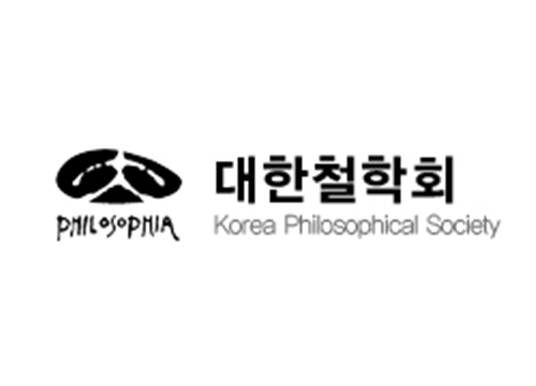곽상과 『장자』의 성립
Guoxaing and the Establishment of Zhuangzi
정세근
충북대학교 철학과
철학연구
2024, vol.172, pp. 159-182 (24 pages)
10.20293/jokps.2024.172.159
대한철학회
초록
곽상을 이해하면서 시대적 배경을 고려하지 않는다면 적지 않은 점을 놓칠 수 있다. 당시의 명사는 정치의 변화와 권력투쟁 속에 어우러져 어떤 정권을 옹호하거나 반대했고, 심지어 방관보다는 적극적으로 참가했던 그들의 의식이 자신의 철학으로 드러나기 때문이다. 곽상이 『장자』를 보는 태도와 자세도 일정 부분 추정될 수 있을 것이다.
이 글은 곽상의 전반적인 인물론과 그의 『장자주』를 표준으로 한 『장자』라는 책의 완성 과정을 요점적으로 다룬다. 『장자』를 보려면 곽상의 『장자주』가 필요불가결했음에도, 그에 대한 역사적 평가는 매우 나쁘다. 역사가는 왜 곽상의 이런 면을 부각하려 했는지, 그의 현실이 처했던 위치는 『장자주』와 관련하여 어떠했는지 살펴본다.
현행본 33편짜리 『장자』의 판본은 곽상이 만들었다. 기록에 따르면 약 27편에서 심지어 52편짜리 『장자』도 있었다. 그런데 문제는 곽상의 『장자』 읽기의 정당성과 방향에 있다. 곽상이 『장자』를 너무도 다르게 해석하는 바람에 후대 주석가들에게 ‘곽상의 주는 틀렸다’는 식으로 비평을 받는다.
오늘날 ‘향곽주’라는 표현을 쓰는 까닭은 곽상이 향수 주를 훔쳤다는 기록 때문이다. 역사서에 따르면 곽상은 향수의 주에 점교(點校)만 했고, 기껏 해 봤자 「추수」, 「지락」에 자신의 주를 달고 「마제」를 자기식으로 바꿨을 뿐이라고 한다. 이런 까닭에 우리가 만나는 『장자』는 이미 향수의 것을 찾을 수 없고, 33편의 『장자』와 그 『장자주』가 곽상의 것이 되어버렸다.
곽상적인 것이 장자적인 것과 극적으로 다르게 드러나는 데는 『장자』의 첫머리인 「소요유」다. 장자에 따르면 참새가 대붕(大鵬)의 뜻을 도저히 알 리가 없다. 그러나 곽상은 참새에 맞는 분수와 소요가 있다고 한다. 만물은 각기 스스로 얻는 바가 있어 제 본성과 능력대로 사는 것일 뿐이므로 참새와 붕새를 나누는 것은 의미 없다는 것이다. 이것은 분명 장자와 다른 생각이다. 장자는 붕새의 소요를 말하는데, 곽상은 참새의 소요를 말한다. 곽상에게 본성은 자연세계가 우리에게 소중히 가꾸라고 심어준 것이 아니라 인간사회가 우리에게 마땅히 해야 할 일을 나누어준 것이다.
장자의 소요는 붕새가 되라는 것임에도, 곽상의 소요는 참새로 남으라고 한다. 장자에게는 발전의 가능성이 있지만 곽상에게는 그런 개방성이 주어지지 않는다. 이것이 장자와 곽상의 큰 차이다.
If you do not consider the historical background while understanding Guoxaing, you may miss many points. This is because the celebrities of the time supported or opposed a certain regime in the vortex of political changes and power struggles, and even their awareness of actively participating rather than just sitting by was revealed through their philosophy. Guoxing’s attitude toward Zhuangzi can also be inferred to some extent.
This article deals in detail with Guoxiang’s overall character and the process of completing the book of Zhuangzi. Although Guoxiang edited the present Zhuangzi, the historical evaluation of it is very poor. Let’s look at why the historian tried to highlight this aspect of Guoxiang and what his actual position was.
The current version of Zhuangzi, which contains 33 chapters, was created by Guoxiang. According to records, there were about 27 to even 52 chapters of Zhuangzi. However, the problem lies in the legitimacy and direction of Guoxiang’s reading of Zhuangzi. Because Guoxiang interpreted Zhuangzi so differently, he was criticized by later scholars as saying, ‘Guoxiang was wrong about Zhuangzi.’ The reason why the expression ‘Xiang and Guo’s commentary’ is used today is because there is a record that Guoxiang plagiarized Xiangxiu’s. According to the history, Guoxiang only annotated on 2 chapters, and changed 1 chapter to his own style. For this reason, Zhuangzi we meet can no longer be found in Xiangxiu’s way of thinking, and Zhuang-tzu as 33 chapters completely depends on Guoxiang.
The first part of Zhuangzi, Xiaoyaoyou(play), shows that the Guoxiang-style is dramatically different from Zhuangzi-style. According to Zhuangzi, there is no way for a sparrow to know the will of Great (bird) Peng. However, Guoxiang says that there are own nature and ability suitable for sparrows. Since all things have their own gain and live, it is meaningless to divide Great Peng from sparrow. This is clearly a different thinking from Zhuangzi. Zhuangzi speaks of the play of Great Feng, while Guoxiang speaks of the play of the sparrow. For Guoxiang, nature is not something the natural world instilled in us to cherish, but something human society has given us to must do.
Although Zhuangzi’s request is to become Great Peng, Guoxiang’s is to remain a sparrow. Zhuangzi has the potential for development, but Guoxiang is not given such openness. This is the huge difference between Zhuangzi and Guoxiang.

